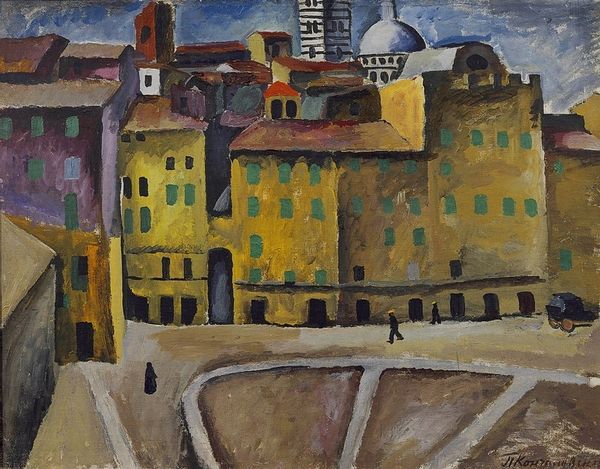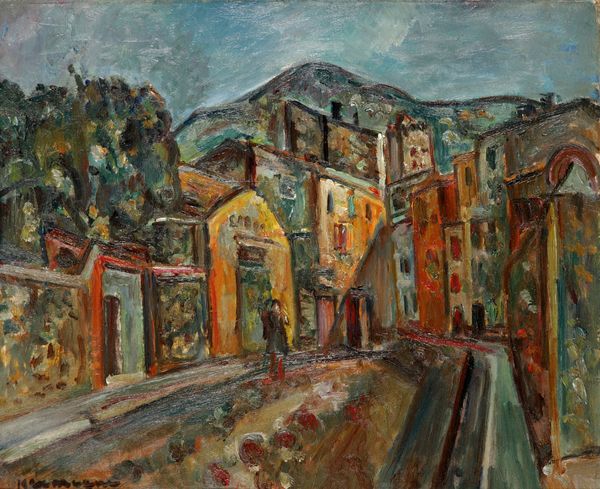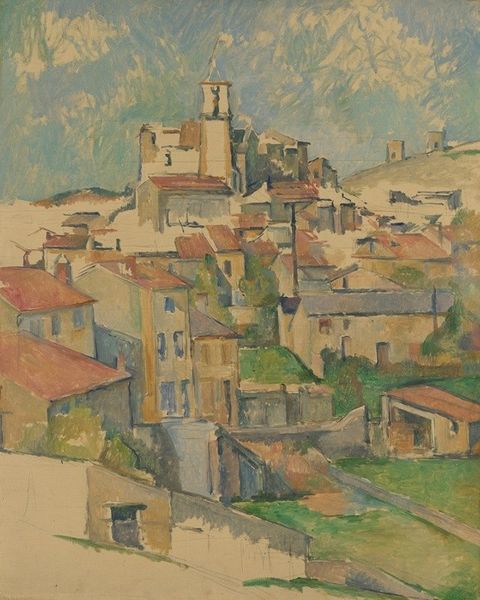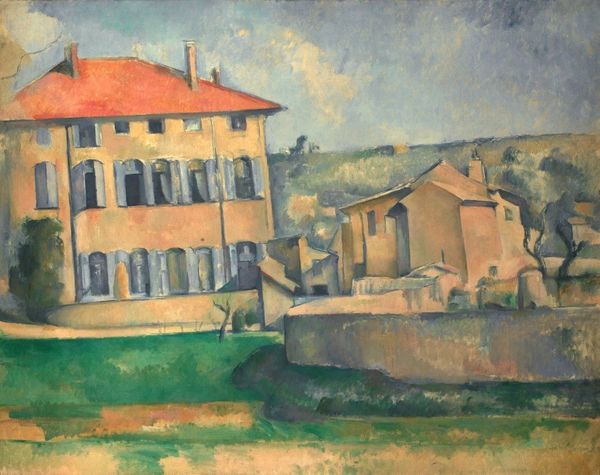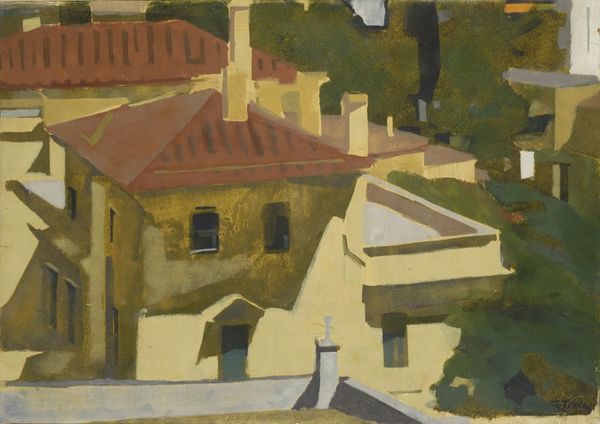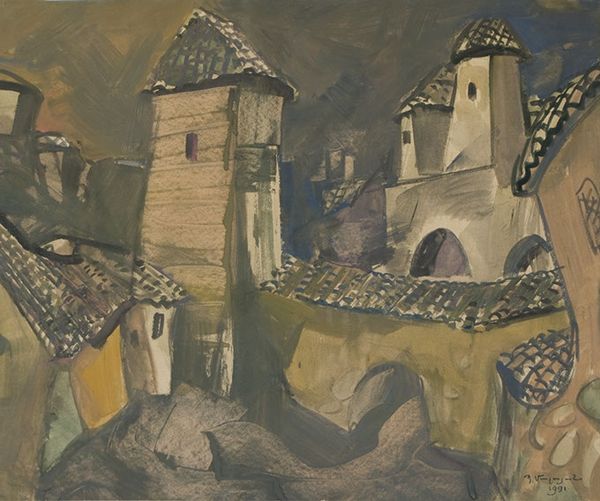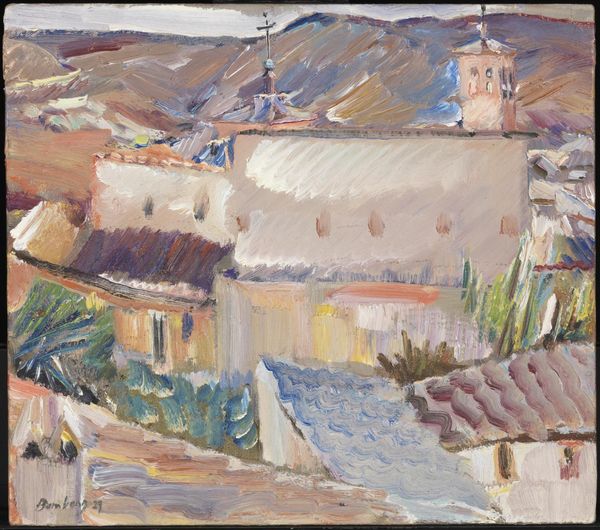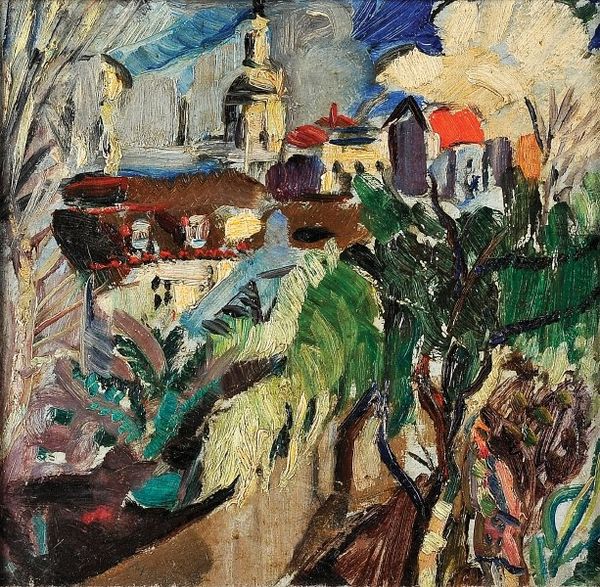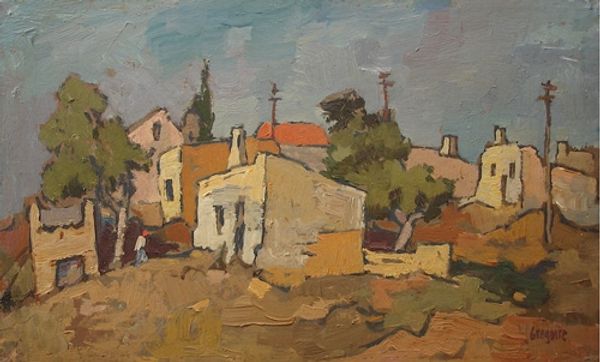
Copyright: Petre Abrudan,Fair Use
Curator: Petre Abrudan's "Light," completed in 1961 using oil paint, presents us with a unique vision of a cityscape, viewed from an unusual perspective. Editor: My first impression is of a slightly unsettling weight. The buildings seem to bear down upon us, and that stark contrast between the deep blue sky and the structures... it feels almost oppressive, but intriguing. Curator: That oppressive feeling resonates, especially when we consider the political context of Eastern Europe in 1961. There was a prevailing mood of controlled expression, where artists navigated strict limitations and the constant presence of state power. I wonder if the looming buildings are representative of institutional weight. Editor: That's a compelling read. I'm more struck by the texture and the tangible application of paint. Look at the base of the hill—you can see the strokes working almost sculpturally, creating a real sense of earthy, almost rough-hewn, materiality. Curator: Absolutely. I'd add that the title itself, "Light," is significant, wouldn't you say? It seems deliberately ironic, considering the heavy atmosphere of the painting, almost gesturing toward a longing for openness and freedom, which were politically and socially contentious themes. Editor: I'm with you. The light in the painting is less about natural illumination and more about, maybe, the properties of the oil-paint itself. Look how he’s dragged the pigments across the surface, layering them almost haphazardly. Curator: It prompts one to think of Brecht's Verfremdungseffekt - or estrangement effect - almost daring the viewer to decode the painting through these visual paradoxes: heavy and light, present and absent. What might it tell us about the conditions of art-making in those days? Editor: And even if one were unfamiliar with that history, the immediacy of the material and the rawness of execution make a visual statement that moves outside those restraints you describe. The buildings aren't perfect; they feel very grounded in this tension between permanence and change. Curator: Exactly, and so much of Modernism engages with themes of identity. Within the context of its time, could it perhaps be asking questions about belonging? Editor: Yes, ultimately what is left is how it operates in the language of form and content. I come away with this deep sense of both tension and tangible presence.
Comments
No comments
Be the first to comment and join the conversation on the ultimate creative platform.
